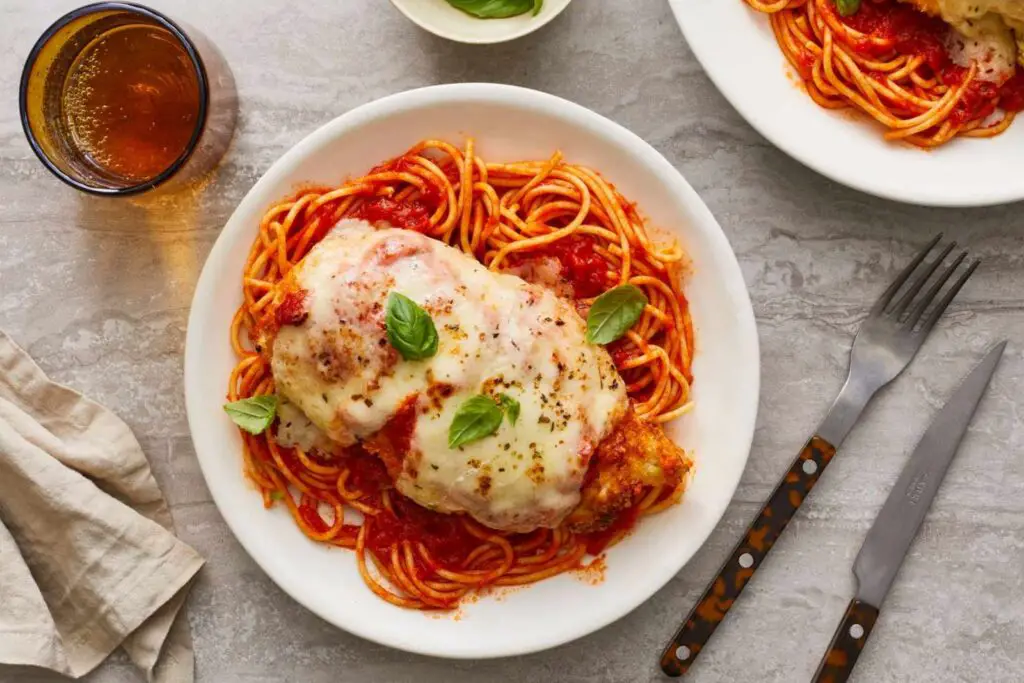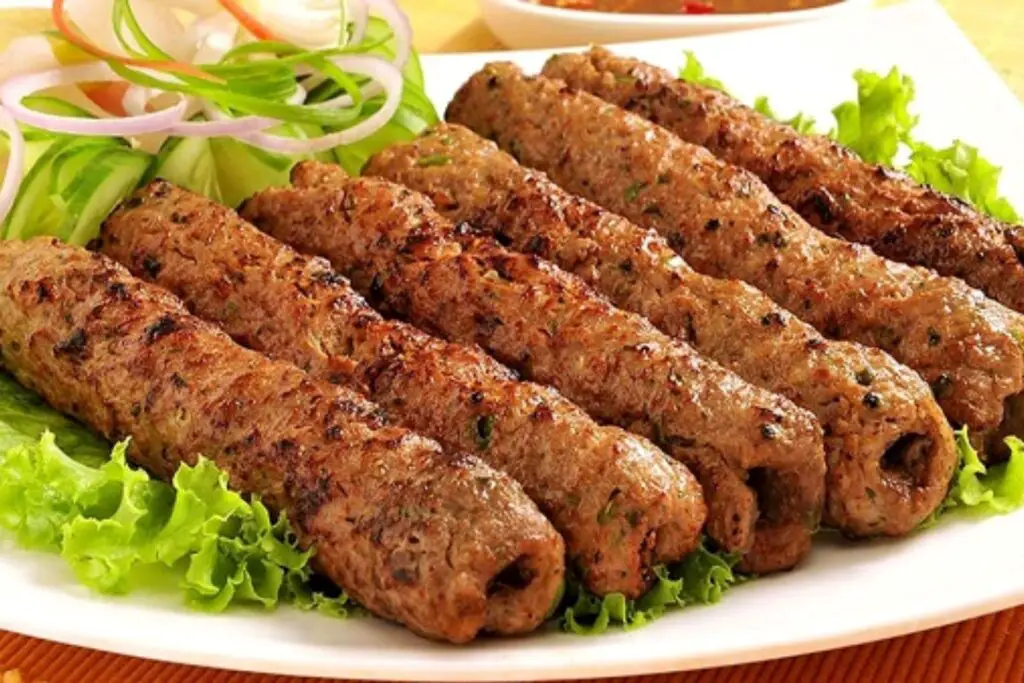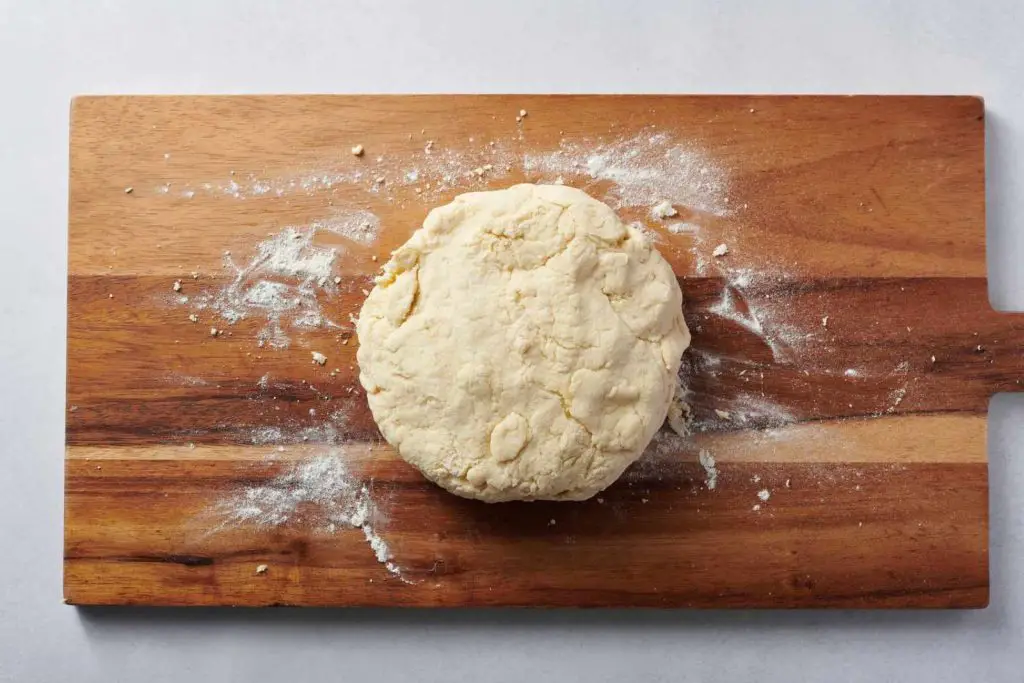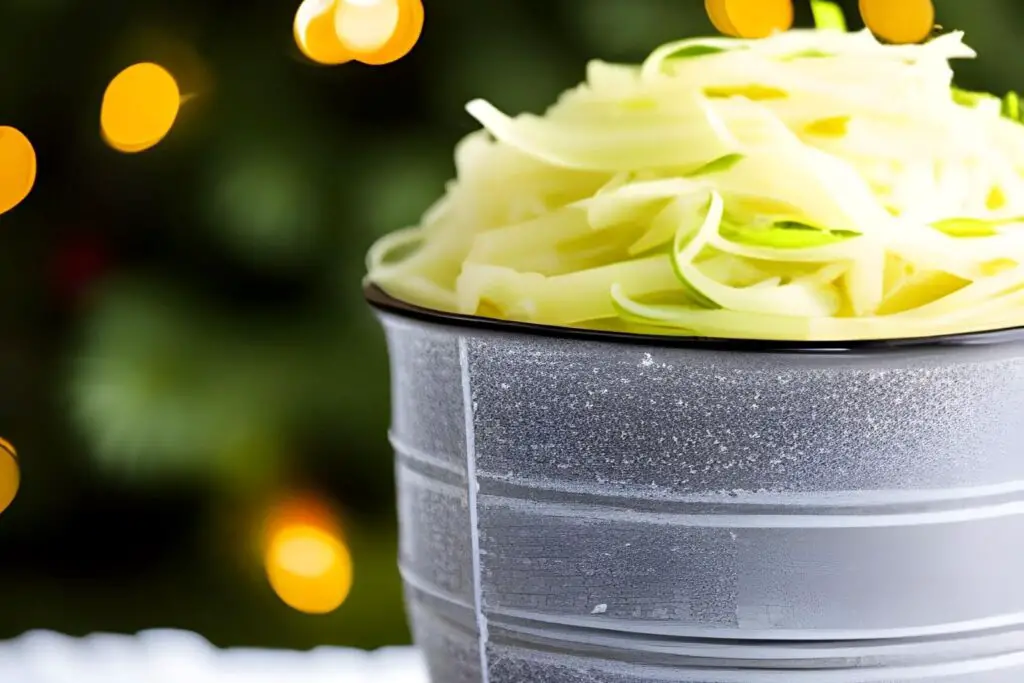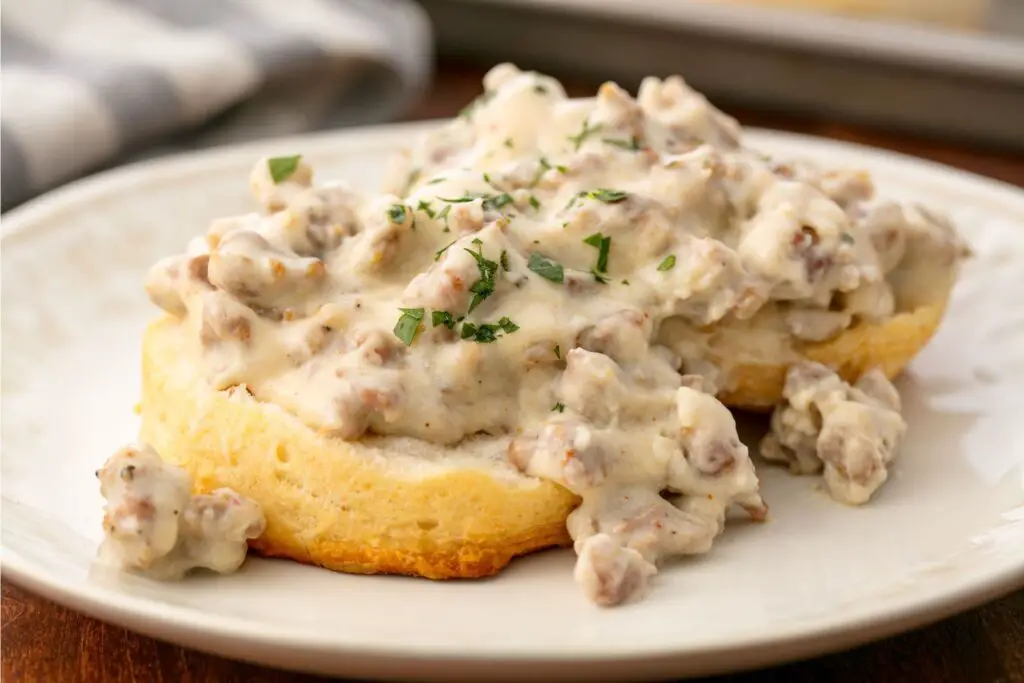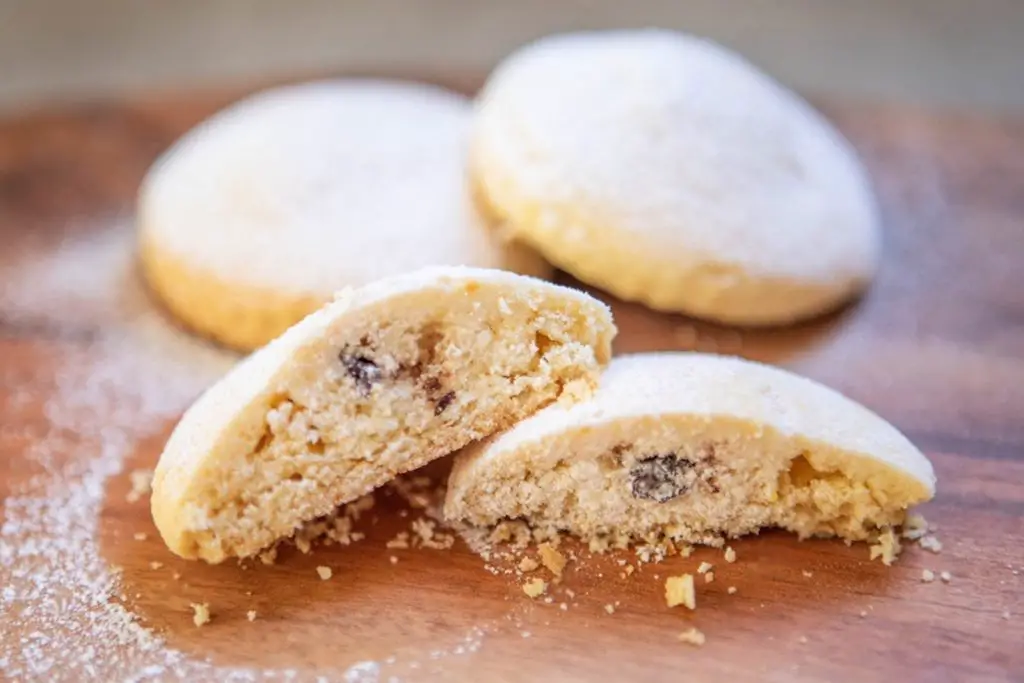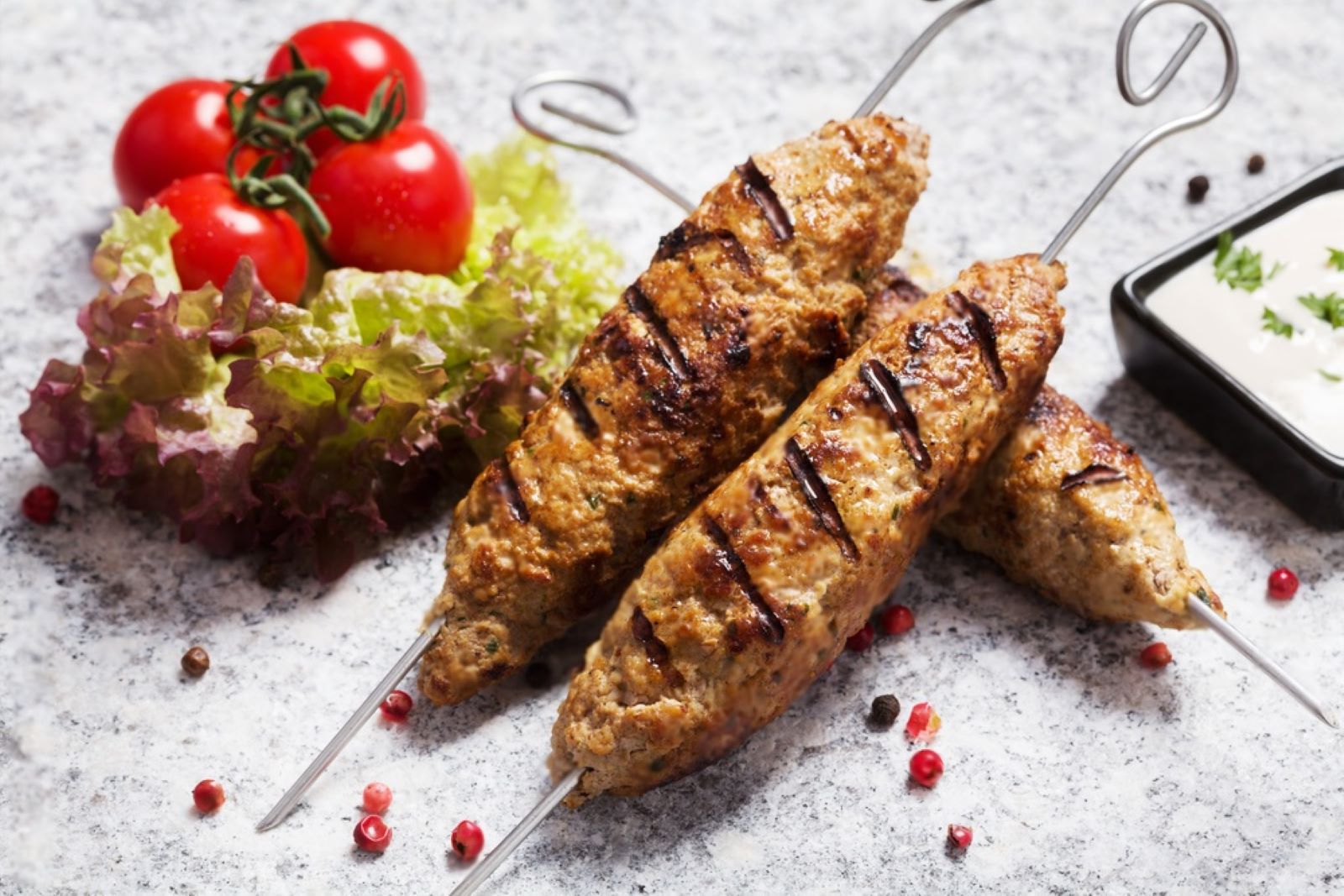
Kofta is a popular Middle Eastern and South Asian dish made from ground meat, such as beef, lamb, or chicken, mixed with herbs, spices, and other flavorful ingredients. These meatballs are often enjoyed grilled, baked, or pan-fried, and can be served with various sauces and accompaniments. If you find yourself with leftover kofta or want to prepare a batch in advance, freezing them is a great way to extend their shelf life and have them readily available for future meals. By following a few simple steps, you can freeze kofta while preserving their taste and texture. This article provides a comprehensive guide on freezing kofta to ensure their optimal quality for later enjoyment.
Here’s a guide on how to freeze kofta:
Step 1: Prepare the kofta mixture
When it comes to freezing kofta, it’s important to start with a well-prepared kofta mixture. This step involves combining the necessary ingredients to create the flavorful and aromatic base for your kofta. Here’s a breakdown of what you need to do:
- Gather the ingredients: Take stock of all the ingredients required for your kofta recipe. The main component is ground meat, which can be beef, lamb, chicken, or a combination of meats. Additionally, you’ll need herbs, spices, breadcrumbs, and any other ingredients specified in your chosen recipe.
- Mix the ground meat: Place the ground meat in a large mixing bowl. Make sure it is thawed if previously frozen. The amount of ground meat needed will depend on the quantity of kofta you wish to make.
- Add the herbs and spices: Measure out the herbs and spices as per your recipe. Commonly used herbs and spices in kofta include parsley, cilantro, cumin, coriander, paprika, garlic powder, onion powder, and salt. Add them to the bowl with the ground meat.
- Incorporate the breadcrumbs: Breadcrumbs serve as a binding agent in the kofta mixture, helping to hold the ingredients together. Measure out the breadcrumbs and add them to the bowl. They will also contribute to the desired texture of the kofta.
- Mix thoroughly: Using your hands or a sturdy spoon, thoroughly mix all the ingredients together. Ensure that the herbs, spices, and breadcrumbs are evenly distributed throughout the ground meat. This step is crucial for achieving a well-balanced flavor profile in your kofta.
- Adjust the consistency, if necessary: Depending on the moisture content of the meat and other factors, you may find that the kofta mixture is too dry or too wet. In such cases, you can make adjustments by adding a little water or additional breadcrumbs. This will help achieve the ideal texture for shaping the kofta.
Can I freeze kofta made with beef or lamb?
Yes, you can freeze kofta made with beef or lamb. Both beef and lamb are suitable meats for making kofta, and they freeze well. Ensure that the kofta is properly shaped and seasoned before freezing, and use airtight containers or freezer bags to prevent freezer burn and maintain the quality of the meat. When thawed and cooked properly, the frozen kofta made with beef or lamb should retain its flavor and texture.
Can I freeze leftover kofta from a restaurant or takeout?
It is generally safe to freeze leftover kofta from a restaurant or takeout, but it’s important to consider a few factors. First, ensure that the kofta has been handled and stored properly before freezing. Transfer the leftovers to airtight containers or freezer bags promptly and freeze them as soon as possible to maintain their freshness. When reheating the frozen leftovers, follow proper food safety guidelines to ensure they are thoroughly heated before consuming.
Step 2: Shape the kofta
Once you have prepared the kofta mixture, the next step is to shape it into individual meatballs. Shaping the kofta not only gives them their distinct appearance but also helps ensure even cooking and freezing. Here’s a detailed explanation of this step:
- Portion the kofta mixture: Take small portions of the kofta mixture using a spoon or your hands. The size of the portions can vary based on your personal preference and the intended use of the kofta. If you plan to serve them as appetizers or in smaller dishes, smaller-sized meatballs may be more suitable. For main course servings, you can shape larger-sized meatballs.
- Roll and shape: Roll each portion of the kofta mixture between your hands to form a ball. Apply gentle pressure to ensure that the meatball is compact and holds together well. As you roll, the mixture will bind together, creating a cohesive shape.
- Ensure uniformity: To ensure even cooking and freezing, it’s important to shape the kofta into uniform-sized meatballs. This will ensure that all the kofta cook at the same rate, preventing some from being overcooked while others are undercooked. It will also make it easier to portion and serve the kofta later on.
- Optional variations: While traditional kofta are shaped into round meatballs, you can also get creative with the shapes if desired. For example, you can flatten the meatballs slightly to create oval-shaped kofta or shape them into elongated cylinders resembling kebabs. The choice of shape is entirely up to you and can add visual interest to your final dish.
Step 3: Arrange the kofta for freezing
After shaping the kofta into meatballs, the next step is to arrange them properly for freezing. This step is crucial to prevent the kofta from sticking together during the freezing process. Here’s how to do it:
- Use a baking sheet or tray: Select a baking sheet or tray that fits comfortably in your freezer. It’s recommended to line the sheet or tray with parchment paper to prevent the kofta from sticking to the surface. The parchment paper creates a non-stick barrier and facilitates easy removal of the frozen kofta.
- Create space between kofta: Place the shaped kofta on the prepared baking sheet or tray, making sure to leave some space between each meatball. This spacing is essential because it prevents the kofta from touching or sticking to one another as they freeze. If the kofta are placed too close together, they may freeze into a solid mass, making it difficult to separate them later on.
- Optimal spacing: Aim for about an inch or two of space between each kofta on the baking sheet or tray. This ensures that they have enough room to freeze individually and maintain their shape. If you have a large quantity of kofta to freeze and the baking sheet or tray doesn’t accommodate all of them, you can use multiple sheets or trays.
- Multiple layers: If needed, you can stack multiple layers of shaped kofta on the same baking sheet or tray. However, make sure to separate the layers with parchment paper to prevent them from sticking together. If you stack the kofta without any separation, they may fuse together during freezing, making it challenging to separate them later.
Step 4: Flash-freeze the kofta
Flash-freezing is a crucial step in the process of freezing kofta. By quickly freezing the individually shaped kofta, you prevent them from clumping together and preserve their individuality. Here’s how to do it:
- Prevent clumping: Flash-freezing involves rapidly freezing the kofta at a very low temperature. This quick freezing process ensures that the outer layer of the kofta freezes rapidly, preventing the individual meatballs from sticking together. This is important because if the kofta freezes while touching or in close proximity, they can form a solid mass, making it difficult to separate them later.
- Preserve individual shape: Flash-freezing helps the kofta retain their individual shapes. When the kofta freezes quickly, the moisture inside crystallizes without forming large ice crystals. This preserves the structure and texture of the kofta, ensuring that they remain intact and visually appealing.
- Duration of flash-freezing: Place the baking sheet or tray with the shaped kofta into the freezer and allow them to freeze for about 1 to 2 hours, or until they become firm. The exact freezing time may vary based on the thickness and size of the kofta, as well as the temperature of your freezer. The goal is to ensure that the outer layer of each kofta is frozen solid.
- Check for firmness: After the recommended time, check the kofta to ensure they are firm to the touch. Gently press one of the kofta to see if it holds its shape without squishing. If they are still soft, allow them to freeze for a bit longer until they reach the desired firmness.
- Transfer to freezer-safe containers or bags: Once the kofta are flash-frozen and firm, you can transfer them into freezer-safe containers or resealable freezer bags. At this stage, the individual freezing prevents them from sticking together. If desired, you can layer parchment paper between the kofta to add an extra barrier of separation.
Can I directly freeze kofta without flash freezing?
Yes, you can directly freeze kofta without flash freezing. Flash freezing is a technique used to freeze food quickly to prevent the formation of large ice crystals, but it is not necessary for kofta. As long as you properly shape and store the kofta in airtight containers or freezer bags, it can be frozen directly in a standard home freezer. Just ensure the kofta is well-sealed to prevent freezer burn and maintain its quality during storage.
Step 5: Package and seal the kofta
After flash-freezing the kofta, it’s essential to package and seal them properly to maintain their quality during freezer storage. Packaging the kofta in freezer-safe containers or bags and removing excess air helps prevent freezer burn and keeps the kofta in optimal condition. Here’s why packaging and sealing are important and how to do it:
- Choose freezer-safe containers or bags: Select containers or resealable freezer bags that are specifically designed for freezer storage. These are made of durable materials that can withstand low temperatures without becoming brittle or breaking. Freezer-safe containers with tight-fitting lids or freezer bags with reliable seals are ideal for keeping the kofta protected.
- Transfer the flash-frozen kofta: Carefully transfer the flash-frozen kofta from the baking sheet or tray into the chosen containers or bags. Ensure that you handle the kofta gently to maintain their shape and prevent any damage.
- Remove excess air: Air is the main culprit behind freezer burn, which can negatively affect the texture and flavor of frozen foods. To minimize the risk of freezer burn, remove as much air as possible from the containers or bags before sealing them. For containers, press the lid down firmly to eliminate any trapped air. For bags, gently squeeze out the air while sealing them.
- Seal tightly: Whether you’re using containers or bags, make sure to seal them tightly to create a secure barrier against air and moisture. A proper seal prevents the kofta from being exposed to freezer air, which can lead to freezer burn and deteriorate their quality.
- Label the packages: It’s important to label each package with the contents (kofta) and the date of freezing. This step helps you keep track of the kofta in the freezer and ensures that you use them within a reasonable time frame. You can use adhesive labels or a marker to clearly mark the packages.
What type of container should I use to freeze kofta?
To freeze kofta, it is best to use airtight containers or freezer bags specifically designed for freezing food. Choose containers that are sturdy, leak-proof, and provide a tight seal to prevent air exposure and freezer burn. Ensure that the containers or bags are appropriately sized to accommodate the kofta without excess space, as extra air can affect the quality of the frozen kofta.
Step 6: Label and date the packages
Labeling and dating the packages containing the frozen kofta is an important step to help you keep track of your frozen food inventory and ensure that the kofta are used within an appropriate time frame. Clear labeling provides valuable information that makes it easier to identify and organize your frozen kofta. Here’s why labeling and dating are important and how to do it effectively:
- Contents identification: Labeling each package with the contents, in this case, “kofta,” allows for easy identification. This way, you can quickly find the specific food item you’re looking for in your freezer, especially if you have multiple types of frozen foods stored.
- Date of freezing: It’s crucial to include the date of freezing on the package. This helps you keep track of how long the kofta have been in the freezer. By knowing the freezing date, you can prioritize using the oldest batches first and ensure that the kofta are consumed within a reasonable time frame.
- Additional information: If there is any additional information you find helpful, such as the recipe used or specific spices or variations of the kofta, you can include that on the label as well. This additional information can come in handy when planning meals or when you want to experiment with different flavors or cooking methods.
- Clear and visible labeling: Use a marker or adhesive labels to clearly write the information on each package. Ensure that the labels are visible and won’t easily fade or smudge. Placing the labels in a prominent location on the package helps you quickly identify the kofta without having to search for the information.
Step 7: Store in the freezer
After properly packaging and labeling the kofta, it’s time to store them in the freezer. Proper storage ensures that the frozen kofta maintain their quality and remain safe for consumption. Here’s why storing them correctly is important and how to do it effectively:
- Maintain quality: The freezer provides a controlled environment that helps preserve the quality and freshness of frozen foods. Placing the sealed kofta packages in the freezer promptly after packaging ensures that they freeze quickly and maintain their flavor, texture, and nutritional value.
- Flat position: Store the kofta packages in a flat position. This allows them to freeze evenly and maintain their shape during the freezing process. Placing them flat also maximizes the use of space in the freezer, making it easier to organize and locate the kofta when needed.
- Prevent misshaping: Storing the kofta in a flat position helps prevent misshaping or deformities. If the packages are stored at an angle or are placed on top of one another, the weight and pressure can cause the kofta to flatten or lose their shape. By keeping them flat, you ensure that they retain their appearance and appeal.
- Coldest part of the freezer: Place the sealed kofta packages in the coldest part of the freezer. Typically, this is the back or bottom of the freezer. The coldest part of the freezer maintains a consistently low temperature, which is crucial for preserving the quality and safety of the frozen kofta. Avoid storing them near the freezer door or in areas that may experience temperature fluctuations.
- Proper organization: If you have multiple packages of kofta or other frozen items, it’s helpful to organize them systematically. Consider grouping similar items together or using dividers to separate different batches of kofta. This way, you can easily locate and access the specific packages you need without causing unnecessary disruption to the rest of the freezer.
How long can I safely store frozen kofta?
You can safely store frozen kofta for up to three months without significant loss in quality. However, it’s important to properly package and seal the kofta to maintain its freshness during storage. Make sure to use airtight containers or freezer bags to prevent freezer burn and protect against odors. Additionally, labeling the containers with the date of freezing can help you keep track of their storage time and ensure you consume them within the recommended time frame.
Other related questions
How should I defrost frozen kofta?
When it comes to defrosting frozen kofta, it’s best to do it gradually in order to preserve the texture and flavor. The recommended method is to transfer the frozen kofta from the freezer to the refrigerator and let it thaw overnight. This slow thawing process ensures that the kofta remains safe to eat while minimizing moisture loss. Once fully thawed, you can reheat the kofta using your preferred method, such as baking, grilling, or pan-frying.
Can I refreeze previously thawed kofta?
It is generally not recommended to refreeze previously thawed kofta. When you thaw the kofta, the process introduces some moisture and potentially allows for the growth of bacteria. Refreezing the kofta can further degrade its quality, texture, and taste. It is best to consume the thawed kofta within a safe timeframe or cook it before refreezing if you still have leftovers. Always prioritize food safety and avoid refreezing thawed kofta whenever possible.
How do I know if my frozen kofta has gone bad?
There are a few signs to look out for to determine if your frozen kofta has gone bad. Firstly, check for any noticeable changes in color or texture. If the kofta appears discolored or has developed freezer burn (dry, white or gray patches), it may be an indication of spoilage. Secondly, if you notice an off or unpleasant odor coming from the kofta, it’s likely not safe to consume. Lastly, if you have any doubts about the safety or quality of the frozen kofta, it’s best to err on the side of caution and discard it to avoid potential foodborne illnesses.
Can I use frozen kofta with the fresh ones?
Yes, you can use frozen kofta alongside fresh ones. However, there are a few considerations to keep in mind. Firstly, ensure that the frozen kofta has been properly thawed before combining it with fresh ones. This helps to ensure even cooking. Secondly, be mindful of the cooking time, as frozen kofta may require slightly longer to cook compared to fresh ones. Lastly, be aware that the texture and flavor of the frozen kofta may differ slightly from the fresh ones, but they can still be used together in various recipes or dishes.
Can I freeze kofta with the sauce/gravy?
It is generally not recommended to freeze kofta with the sauce or gravy. The texture and consistency of the sauce may change during the freezing and thawing process, resulting in a less desirable texture when reheated. It is best to freeze the kofta separately from the sauce or gravy and add the sauce or gravy after reheating the frozen kofta for optimal taste and texture.
Is it possible to freeze vegetarian kofta?
Yes, it is possible to freeze vegetarian kofta. Vegetarian kofta, typically made with ingredients like chickpeas, lentils, or vegetables, can be frozen successfully. Shape the kofta mixture into desired shapes, freeze them on a baking sheet until firm, and then transfer them to airtight containers or freezer bags. Freezing vegetarian kofta allows for convenient meal planning and makes it easier to have them on hand whenever desired.

